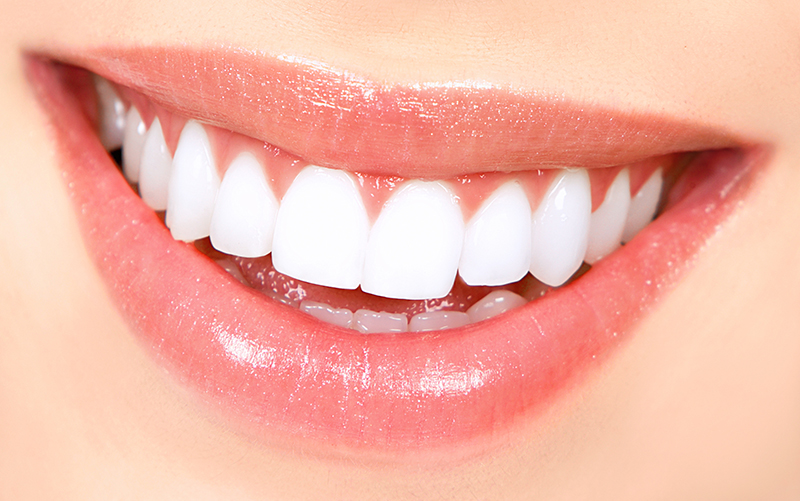
Teeth whitening is one of the quickest & least invasive ways to make a huge difference in the appearance of your smile. Most dentists offer either in-office teeth whitening, take-home teeth whitening kits, or both. The effectiveness of these whitening methods varies slightly, but the way they work is generally the same.
While many people refer to teeth whitening as bleaching, it’s important to know that the dentist doesn’t use the same chemical to whiten your teeth that you use to whiten your laundry! Laundry bleach is a chemical called sodium hypochlorite that smells like chlorine, & it can be poisonous if ingested, so we don’t want it anywhere near your mouth! For teeth bleaching, two chemicals are commonly used: hydrogen peroxide & carbamide peroxide.
Even though the hard outer surface of your teeth, called enamel, seems solid, on a microscopic level, it is actually porous. Stains & discoloration on your teeth appear when compounds from the foods you eat (or from smoking) penetrate this porous enamel layer & accumulate there. Teeth bleaching works when hydrogen peroxide creates a chemical reaction that breaks apart the staining compounds.
During an in-office teeth cleaning, the dentist will first clean your teeth then apply a gel that contains 10 to 35 percent hydrogen peroxide. Sometimes a high powered light is then used to help speed up the chemical reaction. After leaving it on for several minutes, the dentist will remove the bleaching gel, then re-apply it. The entire whitening procedure usually takes about 45 minutes to an hour.
For at-home teeth bleaching, your dentist will take an impression of your teeth & creates soft dental trays. These trays are then filled with a thin layer of gel that contains 10 to 20 percent carbamide peroxide. (Carbamide peroxide breaks down into hydrogen peroxide & urea in the mouth, so the active bleaching agent in at-home kits is still hydrogen peroxide.) At-home bleaching trays are worn for a few hours during the day or while sleeping. Because they are less powerful, at-home systems take longer to achieve the same whitening effects as in-office systems.
Teeth bleaching is not a good solution for everyone. Because teeth bleaching is designed to treat stains on natural tooth enamel, patients who have tooth colored restorations (i.e. fillings or crowns) or veneers should not get their teeth whitened. Whitening compounds do not work on the ceramic or porcelain composites these restorations are made from, so the result is that teeth color may become mismatched. Teeth bleaching will also not work well on tooth discoloration that is the result of changes inside the tooth, below the enamel, such as grayish teeth caused by certain medications. For this reason, we always recommend that teeth whitening, whether at home or in-office, be performed under the supervision of your dentist.
